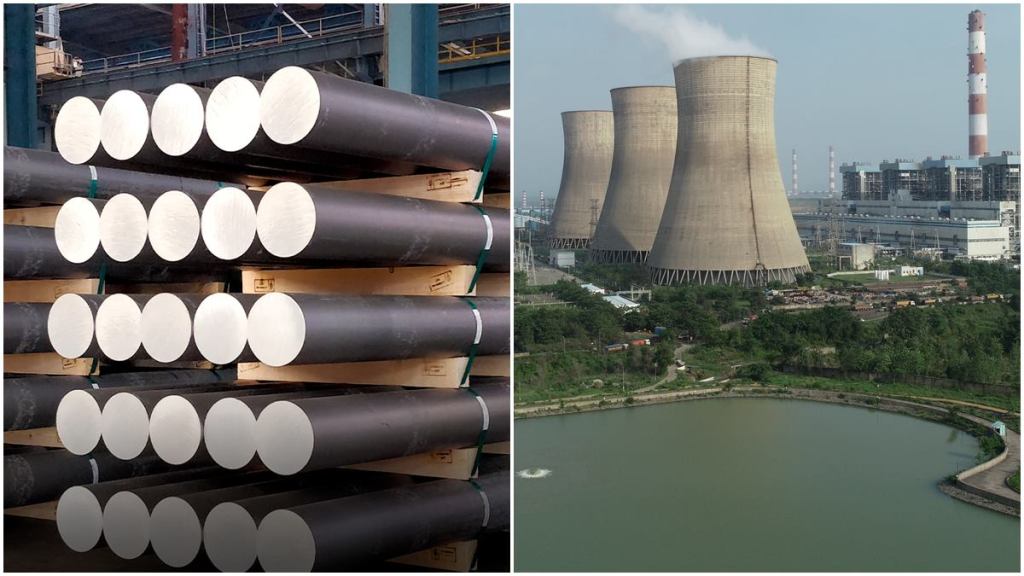By Mr Rahul Sharma
The global drive towards Net Zero Carbon and Sustainable Development Goals is gaining remarkable traction as countries and organizations swiftly embrace climate-resilient business models. With the urgency to address climate change, governments and industries across the globe are proactively safeguarding against potential disruptions, ensuring the stability of global demand and supply chains. Recently, on Earth Day, the Hon’ble Prime Minister reiterated India’s commitment to furthering sustainable development in line with our culture of living in harmony with nature.
These collective commitments reflect a resolute determination to build a sustainable future for generations to come. Now, the global energy transition will be metals and minerals intensive, with sustainable and green metals like aluminium crucial for a low-carbon future. The manufacturing industry will therefore need to significantly ramp up production to meet the emerging demand from critical and sunrise sectors such as aerospace, high-tech manufacturing, electric vehicles, green buildings, electrical infrastructure, renewable energy, sustainable packaging, battery technology and more.
‘Green’ products, the next wave
The need for low carbon or ‘green’ products is on the rise as industries look to decarbonise their value chains. There is now a growing emphasis on creating a sustainable supply chain through responsible sourcing of materials and conducting proper due diligence on all product procurement. Industry players are collaborating with their suppliers to reduce the carbon footprint of raw materials, electrify logistics and transportation, and promote a circular economy. Recognising this need, Vedanta Aluminium was India’s first aluminium producer to launch a low-carbon ‘green’ aluminium product line, branded ‘Restora’ and ‘Restora Ultra’, which are produced using renewable energy and innovative technologies. This is helping aluminium-based customer industries decarbonise their value chains and manufacture green products.
The big energy transition
As a nation, India has committed to achieving Net Zero by 2070, with an ambitious target of having 500 GW of installed renewable energy by 2030, which includes 280 GW of solar power and 140 GW of wind power. This vision will require the manufacturing industry to significantly contribute towards the country’s decarbonization endeavours – a challenge that the industry is already showing progress in.
Metals, mining and manufacturing industries have traditionally been energy intensive, and in a country like India, they are typically thermal power based. Energy sustainability has, therefore, always been an area of expert engineering and judicious resource management. Towards this end, the industry has adopted a two-fold strategy when it comes to carbon reduction: mitigate and offset. Mitigation sees manufacturers enhance their operational excellence for higher energy conservation, increase renewables consumption, and transition to low-carbon fuels. In fact, Vedanta Aluminium was India’s largest industrial consumer of renewable energy in FY22, procuring 3 Billion Units of RE from energy exchanges.
Tech for transformation
Manufacturers are now aggressively exploring leading-edge clean tech and digital solutions such as Artificial Intelligence, Machine Learning, Augmented & Virtual Reality, and Industrial Internet of Things to revolutionise the shopfloor and make it future-ready. These technologies, combined with the usage of advanced data analytics, the power of Industry 4.0 and Web3., are truly bolstering manufacturing excellence by helping manufacturers improve production efficiency, enhance manpower productivity, and reduce consumption of resources. A smart integration of these new-age technologies gives manufacturers real-time visibility of all critical plant operations, allowing for smarter decision-making, judicious usage of raw materials and an improved customer experience.
Designing for circularity
Manufacturing companies, with their expansive operations, must design for circularity in their value-chains. While India’s circular economy is far from maturity, there is certainly promising progress in this regard. For example, thermal power plants which feed India’s electricity requirements generate large volumes of fly ash, which previously used to get discarded as waste. Fly-ash can be used as a supplementary cementitious material and is therefore useful as a replacement material in cement production. It can also significantly augment the properties of normal concrete while reducing the water consumption required to produce it. This has seen power producers collaborate with cement producers and even NHAI, for gainful utilisation of fly ash in cement production and infrastructure development. Long-term strategic collaborations between businesses in this direction will not only grant a new lease of life to significant volumes of these so-called ‘industrial wastes’, but also provide an impetus for sustainable growth to other sectors by enabling access to low cost, better and more sustainable alternatives.
A greener future awaits
Sustainability is no longer a matter of choice, but rather a matter of how fast and how efficiently countries and industries must achieve it. The Indian manufacturing industry has certainly put its pedal to the metal when it comes to growing its businesses sustainably through responsible utilization of resources and achieving the highest efficiencies of assets and processes. This is further anchored by a robust, well-rounded approach to sustainability management, which includes a laser focus on environmental parameters such as carbon reduction, energy conservation, air quality control, water sustainability, circular waste management, and biodiversity. All that remains is encouraging regulatory and policy support to enable the transition to ‘green’ in a manner that is both agile and sustainable.
The author is CEO, Vedanta Ltd – Aluminium Business


